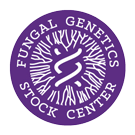Strain: Neurospora crassa
FGSC #5058
Reporting Genes: his-2 nic-2
Species: crassa
Allele: C94 43002
Alternate Strain Number: 74-OR17-24a
Depositor: FJD
Linkage Group: IR IR
Mating Type: a
Genetic Background: SL
Opposite Mating Type: 5059
Genes

Reporting Genes: his-2 nic-2
Species: crassa
Allele: C94 43002
Alternate Strain Number: 74-OR17-24a
Depositor: FJD
Linkage Group: IR IR
Mating Type: a
Genetic Background: SL
Opposite Mating Type: 5059
